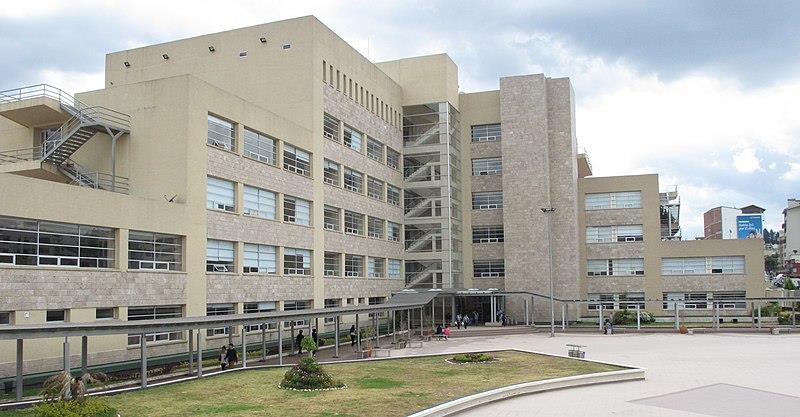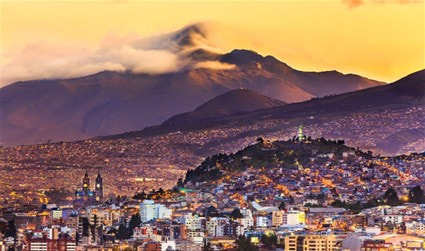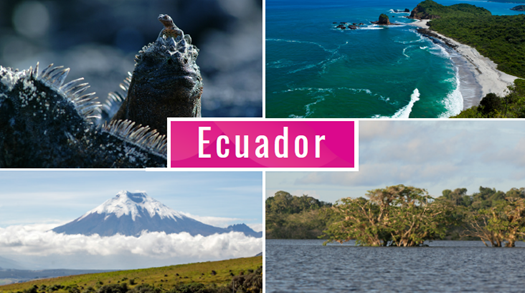Escuela Politécnica Nacional (EPN)
|
The congress will take place at the Escuela Politécnica Nacional (EPN or National Polytechnic School) , a modern and versatile space located in the center of Quito. This university is known for its ability to host large international events, with multiple auditoriums, rooms and classrooms that can be configured according to the specific needs of the conference. In addition, it is equipped with the latest technology in audiovisuals and internet connectivity.
Address: Av. Ladrón de Guevara E11-253, Quito 170143, Ecuador
(Escuela Politécnica Nacional (EPN) - Map ) |
ABOUT QUITO
|
Quito, Ecuador’s capital, is a city of breathtaking landscapes, rich history, and vibrant culture. Nestled in the Andes at 2,850 meters above sea level, it is one of the highest capitals in the world, offering stunning views and a unique atmosphere. As a UNESCO World Heritage Site, Quito boasts a beautifully preserved colonial center filled with historic churches, plazas, and architectural gems that reflect its deep-rooted history and cultural identity.
Beyond its historical charm, Quito is a dynamic and modern city with a strong academic and scientific presence. Its universities and research institutions foster innovation and knowledge exchange, making it a key hub for intellectual engagement. The city also offers excellent infrastructure, a well-connected transportation system, and a welcoming atmosphere. With its blend of tradition and modernity, Quito provides an inspiring setting where visitors can immerse themselves in a thriving cultural scene while enjoying the warmth and hospitality of its people. The currency in Ecuador is the US dollar. |
HOW TO GET TO QUITO
Directly from the airport
Getting to Quito is easy, thanks to its well-connected Mariscal Sucre International Airport (UIO), one of the most modern in Latin America. Located about 40 minutes from the city center, the airport serves numerous international airlines, offering direct flights from major cities in North America, Europe, and Latin America, including Miami, New York, Madrid, Bogotá, and Lima.
Public transport
Buses 198, 199 and 200 run every 20 minutes from Quito Mariscal Sucre Airport to the city. Bus 198 (SOTRANOR) runs to Terminal Río Coca in the middle of Quito, bus 199 (COSIBO) to Quitumbe Terminal in the south of Quito and bus 200 (OPERNORTE) to Terminal Terrestre Carcelén in the north of Quito. You can buy a single bus ticket (currently USD 2 ~ 1.85 Euro). The airport bus station can be found by following the signs that read ‘transporte colectivo’.
Bus services
Aeroservicios runs directly from the airport to Parque Bicentenario (Bus Service to Airport) in the north of the city, the site of the old airport. On weekdays the bus runs every 30 to 60 minutes between 04:00 hours and 20:00 hours, during the weekend and on public holidays you have a travel option every 60 minutes. You can buy tickets at the Aeroservicios information desk in the Arrivals hall of Quito Mariscal Sucre Airport, at the bus station or online through the website (website and timetable Aeroservicios). The price for a one-way bus ticket is $8 for adults and $4 for children and seniors.
Taxi service
A taxi from Quito Mariscal Sucre Airport to the centre of Quito such as Centro Histórico and La Mariscal will cost you US$ 30. A taxi ride between Quito Mariscal Sucre Airport and the city centre takes 50 minutes.
For travelers arriving from other parts of Ecuador, Quito has an efficient domestic flight network, connecting it to Guayaquil, Cuenca, and other key destinations. Overland travel is also an option, with well-maintained highways linking Quito to various regions. Long-distance buses provide comfortable and affordable transportation from neighboring countries like Colombia and Peru.
Getting to Quito is easy, thanks to its well-connected Mariscal Sucre International Airport (UIO), one of the most modern in Latin America. Located about 40 minutes from the city center, the airport serves numerous international airlines, offering direct flights from major cities in North America, Europe, and Latin America, including Miami, New York, Madrid, Bogotá, and Lima.
Public transport
Buses 198, 199 and 200 run every 20 minutes from Quito Mariscal Sucre Airport to the city. Bus 198 (SOTRANOR) runs to Terminal Río Coca in the middle of Quito, bus 199 (COSIBO) to Quitumbe Terminal in the south of Quito and bus 200 (OPERNORTE) to Terminal Terrestre Carcelén in the north of Quito. You can buy a single bus ticket (currently USD 2 ~ 1.85 Euro). The airport bus station can be found by following the signs that read ‘transporte colectivo’.
Bus services
Aeroservicios runs directly from the airport to Parque Bicentenario (Bus Service to Airport) in the north of the city, the site of the old airport. On weekdays the bus runs every 30 to 60 minutes between 04:00 hours and 20:00 hours, during the weekend and on public holidays you have a travel option every 60 minutes. You can buy tickets at the Aeroservicios information desk in the Arrivals hall of Quito Mariscal Sucre Airport, at the bus station or online through the website (website and timetable Aeroservicios). The price for a one-way bus ticket is $8 for adults and $4 for children and seniors.
Taxi service
A taxi from Quito Mariscal Sucre Airport to the centre of Quito such as Centro Histórico and La Mariscal will cost you US$ 30. A taxi ride between Quito Mariscal Sucre Airport and the city centre takes 50 minutes.
For travelers arriving from other parts of Ecuador, Quito has an efficient domestic flight network, connecting it to Guayaquil, Cuenca, and other key destinations. Overland travel is also an option, with well-maintained highways linking Quito to various regions. Long-distance buses provide comfortable and affordable transportation from neighboring countries like Colombia and Peru.
THINGS TO SEE AND DO IN QUITO
|
Its historic center, a UNESCO World Heritage Site, is one of the best-preserved in Latin America, featuring landmarks like the Plaza Grande, the Presidential Palace, and the impressive La Compañía de Jesús Church, known for its stunning gold interior. Visitors can stroll through colonial streets, admire centuries-old architecture, and explore lively plazas filled with local artisans and street performers.
For breathtaking panoramic views, a visit to El Panecillo or a ride on the TelefériQo to the Pichincha volcano is a must. Quito is also home to the famous Mitad del Mundo, where visitors can stand on the equator line and experience unique gravitational experiments. For more information about tours here. |
Beyond sightseeing, the city boasts a vibrant gastronomic scene, bustling craft markets, and a rich cultural life with museums, theaters, and festivals. Whether exploring history, nature, or cuisine, Quito offers unforgettable experiences.
From Quito you can enter the great megadiversity that characterizes Ecuador, expressed in its 4 worlds: the Pacific Coast, the Highland region with its Avenue of the Volcanoes - named after the expeditionary Humboldt-, the Amazon and the Galapagos Islands, unique in the world, narrating, live and direct, the theory of evolution of Charles Darwin.
From Quito you can enter the great megadiversity that characterizes Ecuador, expressed in its 4 worlds: the Pacific Coast, the Highland region with its Avenue of the Volcanoes - named after the expeditionary Humboldt-, the Amazon and the Galapagos Islands, unique in the world, narrating, live and direct, the theory of evolution of Charles Darwin.






